Every year, Americans spend over $400 billion on prescription drugs. But here’s the truth: generics are why most of that money doesn’t end up in your wallet. If you’re paying full price for a brand-name pill when a generic version exists, you’re leaving money on the table. And it’s not just about any generic - authorized generics can sometimes save you even more. The problem? Most people don’t know how to ask for them.
What’s the Difference Between Generic and Authorized Generic?
Let’s clear this up right away. A generic drug is made by a different company after the brand-name drug’s patent expires. It has the same active ingredient, works the same way, and is approved by the FDA as safe and effective. But here’s the twist: sometimes, the original brand company makes its own generic version. That’s an authorized generic. It’s chemically identical to the brand drug - same factory, same formula, same packaging - just sold under a generic label and usually at a much lower price. For example, if you take the brand-name drug Epclusa for hepatitis C, the authorized generic is made by the same company but sold under a different name. The FDA says authorized generics are indistinguishable from the brand. The only difference? Price.How Much Can You Actually Save?
The numbers don’t lie. When a generic hits the market, prices typically drop by more than 75% within a year. Some drugs, like the HIV medication Truvada, saw prices plunge from $50 per pill to just $3 after generic competition arrived. That’s a 94% drop. In 2022 alone, generic drugs saved the U.S. healthcare system $408 billion. But here’s where it gets personal: your out-of-pocket cost might not match the list price. Insurance formularies and pharmacy benefit managers (PBMs) control what you pay at the counter. A 2022 report from the Association for Accessible Medicines found that 93% of generic prescriptions cost less than $20 in copays. For brand-name drugs? Only 59% did. The average generic copay was $6.16. The average brand? $56.12. Still, some patients pay way more than that. Why? Because not all generics are treated the same by your insurance. An authorized generic might be placed on a higher tier than a traditional generic, even if it’s the exact same medicine. That means your $45 copay for an authorized generic could be $20 for the traditional version - even though both are chemically identical.How to Ask the Right Questions at the Pharmacy
You won’t save money if you don’t ask. Most pharmacists know about generics, but many don’t know the difference between authorized and traditional generics - or how your insurance treats them. Here’s exactly what to say:- “Is there a generic version of this drug available?”
- “Is this an authorized generic?”
- “How does my insurance treat authorized generics versus other generics?”
- “Can I switch to a different generic to lower my copay?”
- “What’s the cash price if I don’t use insurance?”
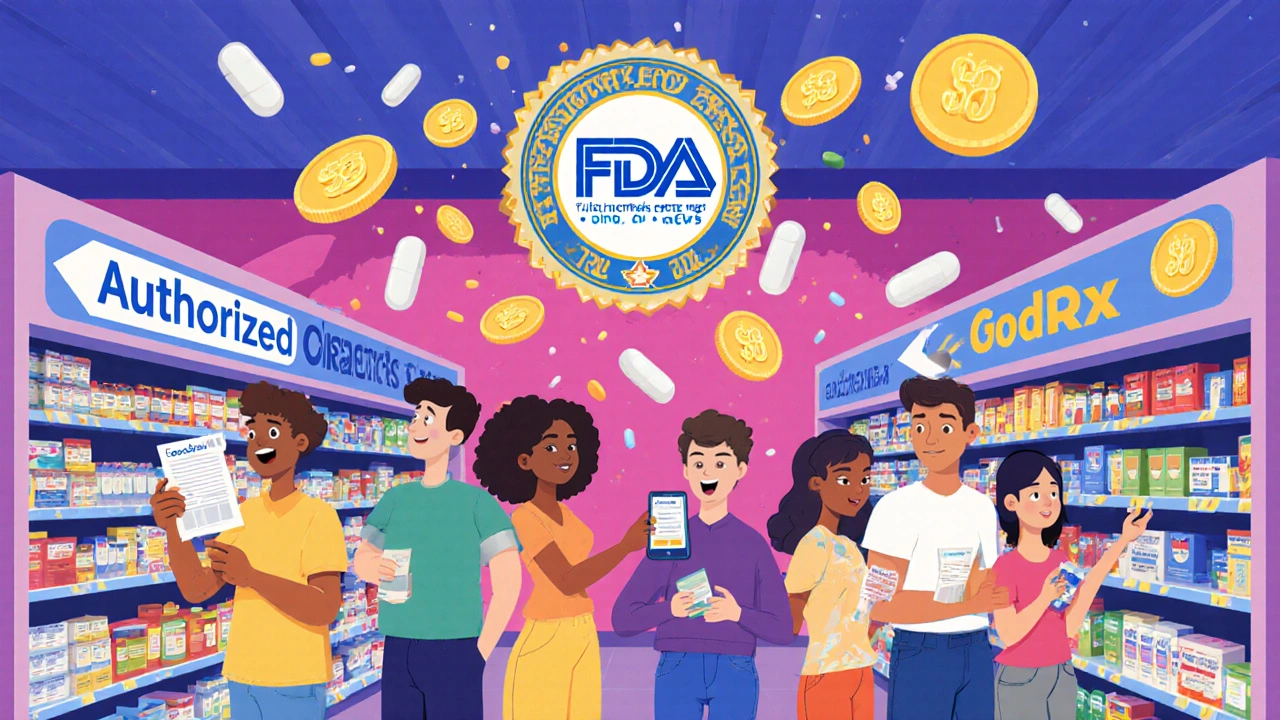
Why Authorized Generics Can Be Tricky
Authorized generics sound perfect - same drug, lower price. But there’s a catch. Some brand companies use authorized generics to delay real competition. By launching their own generic right after patent expiry, they block other companies from entering the market. That’s because the first generic company to file gets 180 days of exclusivity. If the brand launches an authorized generic during that time, it can nullify that exclusivity - and keep prices higher longer. That’s why some authorized generics aren’t always the cheapest. In rare cases, the traditional generic - made by a competitor - ends up cheaper because the brand company didn’t undercut them enough. For example, one patient switched from an authorized generic of their blood pressure medication to the traditional generic and saved $20 a month. Same pills. Same effectiveness. Just different pricing rules.What to Do When Your Insurance Doesn’t Cooperate
Your insurance plan doesn’t always pass savings to you. Sometimes, they set high copays for generics because they get rebates from the manufacturer - and you don’t see that money. If your copay for a generic is still too high, here’s what to try:- Ask your pharmacist for the cash price. Sometimes paying out of pocket is cheaper than your copay.
- Use apps like GoodRx or SingleCare. They show you the lowest price across nearby pharmacies for both traditional and authorized generics.
- Call your insurance company’s formulary team. Ask: “Why is this authorized generic on Tier 3 when the traditional generic is on Tier 1?” You’d be surprised how often they’ll move it.
- Ask your doctor for a prior authorization or exception request. If you can prove the authorized generic is the same drug and you’re paying more, they might approve a lower tier.
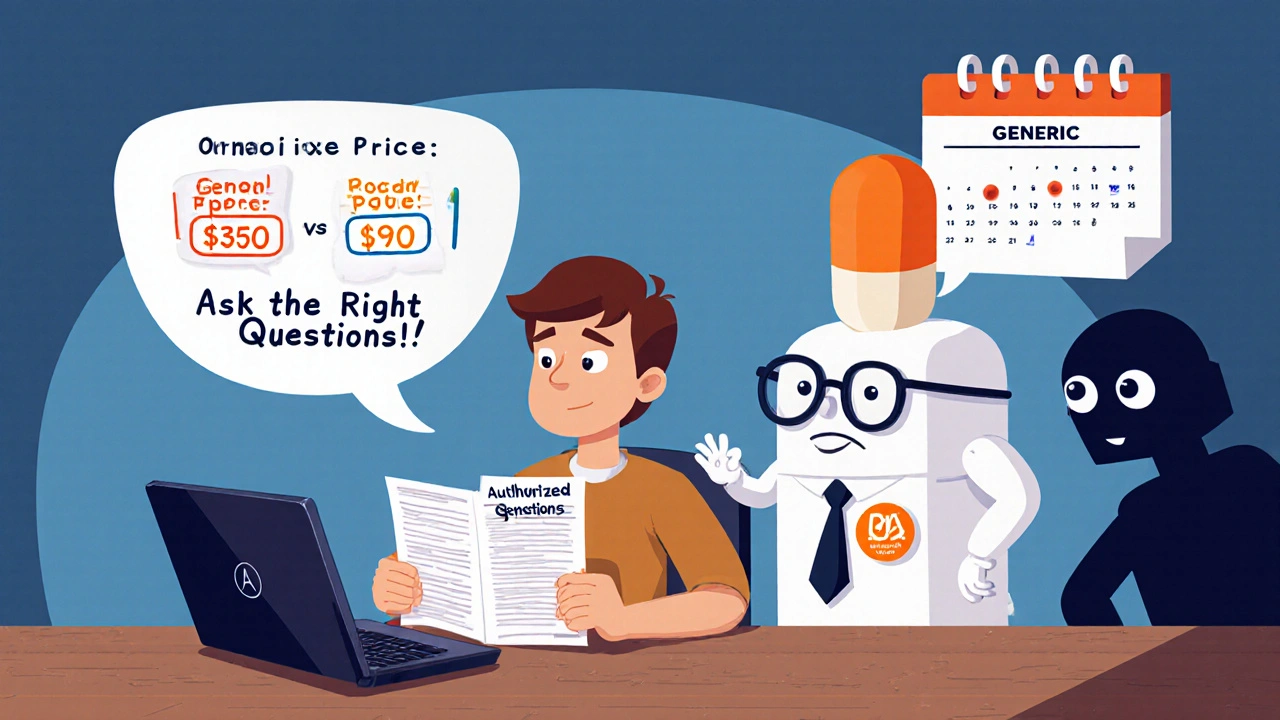
Real Stories From Real People
One Reddit user, ‘PharmaPatient87,’ shared that their insulin dropped from $350 brand to $90 as an authorized generic - but their copay stayed at $45 because their plan treated it differently. Another user, ‘BudgetRx,’ switched from an authorized generic to a traditional generic for their blood pressure med and saved $20 a month. Both took the exact same medicine. The only thing that changed? How they asked for it. A 2023 survey by Patients for Affordable Drugs found that 28% of people paid over $20 for a generic prescription - even though the list price was under $10. That’s not a drug problem. That’s a system problem. And the only way to fix it is by asking.What’s Changing in 2025?
The FDA’s 2023 Drug Competition Action Plan is pushing to speed up approvals for complex generics - like inhalers, eye drops, and skin creams - where competition has been slow. The goal? More generics, faster. That means more savings on drugs you might not even realize have cheaper options. Also, biosimilars - the generic version of biologic drugs like Humira or Enbrel - are growing fast. In 2023, they saved over $7 billion. And more are coming. If you’re on one of these expensive drugs, ask if a biosimilar is available. It’s not just a generic. It’s a whole new level of savings.Bottom Line: Don’t Guess. Ask.
You don’t need to be a pharmacist or a policy expert to save hundreds a year. You just need to ask the right questions. Every time you get a new prescription, or refill an old one, say: “Is there a generic? Is it authorized? Can I pay less?” The system is designed to make you pay more. But you’re not powerless. You have the right to know what you’re paying for - and how to get it cheaper. Generics aren’t just a footnote in drug pricing. They’re the biggest tool you have to control your healthcare costs. Use it.What’s the difference between a generic drug and an authorized generic?
A generic drug is made by a different company after the brand’s patent expires. It has the same active ingredient and meets FDA standards for safety and effectiveness. An authorized generic is made by the original brand company - same factory, same formula - but sold under a generic label. The only real difference is price: authorized generics are often cheaper than the brand, but sometimes more expensive than traditional generics due to insurance rules.
Are authorized generics as safe as brand-name drugs?
Yes. The FDA requires authorized generics to be chemically identical to the brand-name drug. They’re made in the same facility, using the same ingredients and processes. The FDA considers them therapeutically equivalent. There’s no difference in how they work in your body.
Why is my copay for a generic still high?
Your insurance plan may not pass savings to you. Even if the drug’s list price dropped, your copay might stay high because your insurer gets a rebate from the manufacturer - and you don’t see that money. Ask your pharmacist for the cash price. Use GoodRx. Call your insurance to ask why your generic is on a higher tier than another version of the same drug.
Can I ask my doctor to prescribe a generic instead of a brand?
Absolutely. Most doctors will write for generics unless there’s a medical reason not to. When you get your prescription, ask: “Can you prescribe the generic version?” or “Is there an authorized generic available?” If your doctor says no, ask why. In most cases, the answer is cost - not safety.
How do I know if a drug has an authorized generic?
Ask your pharmacist. You can also check the FDA’s Orange Book or use apps like GoodRx - they often list whether a generic is authorized. If the manufacturer name on the bottle matches the brand name, it’s likely an authorized generic. For example, if you see “AbbVie” on a bottle labeled as a generic for Humira, that’s an authorized generic.
Are authorized generics always cheaper than traditional generics?
Not always. Sometimes, the traditional generic - made by a competitor - ends up cheaper because it’s under more price pressure. Authorized generics may have higher list prices if the brand company doesn’t want to undercut competitors too much. Always compare cash prices and copays for both types before deciding.
What if my pharmacy doesn’t know what an authorized generic is?
It happens more than you think. A 2022 survey found only 43% of independent pharmacists could clearly explain the difference. If your pharmacist isn’t sure, ask them to call the manufacturer or check the FDA’s website. You can also go to another pharmacy. Chain pharmacies like CVS or Walgreens usually have better access to this info. Don’t be afraid to ask again - or go elsewhere.
Can I switch between generic types to save money?
Yes - if your doctor approves it. You can often switch from an authorized generic to a traditional generic (or vice versa) without any medical risk. Just ask your pharmacist: “Can I try the other version?” and check your copay. Many people save $10-$30 a month just by switching between two identical pills.

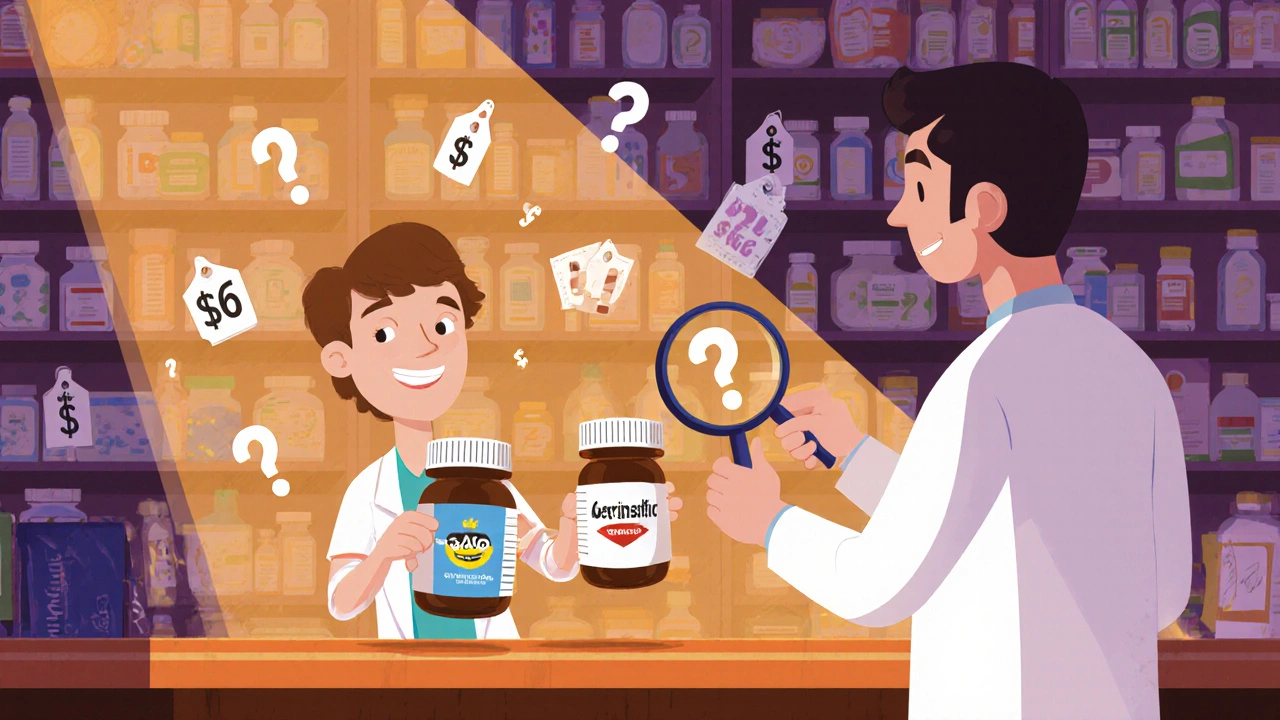

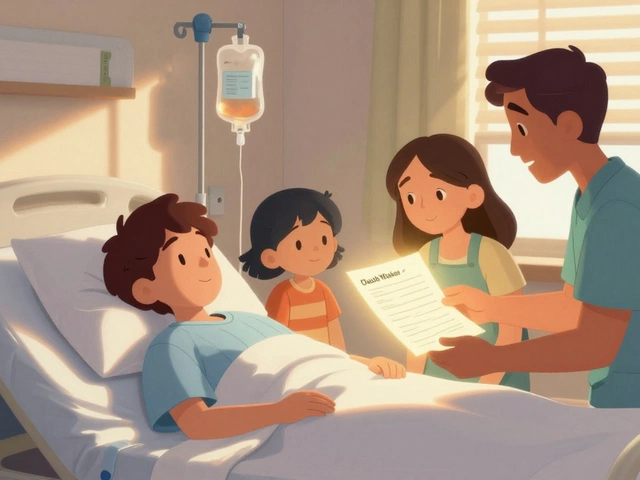
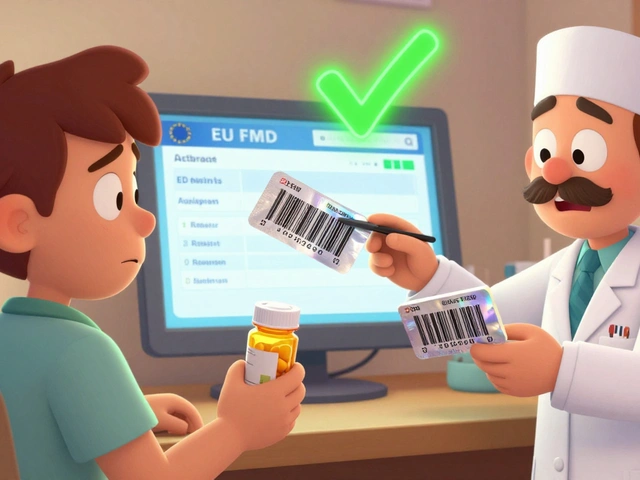
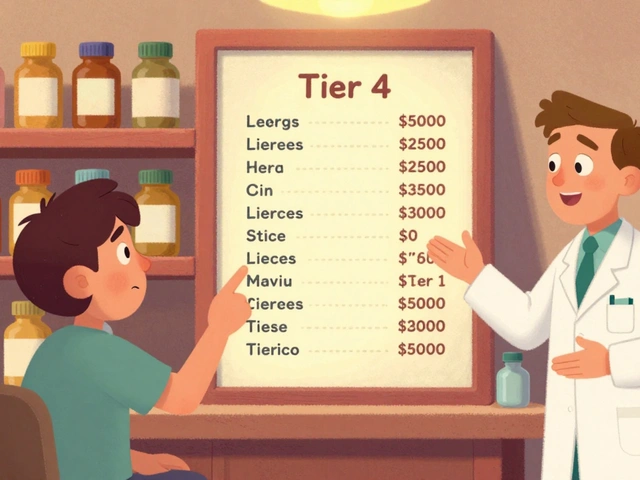
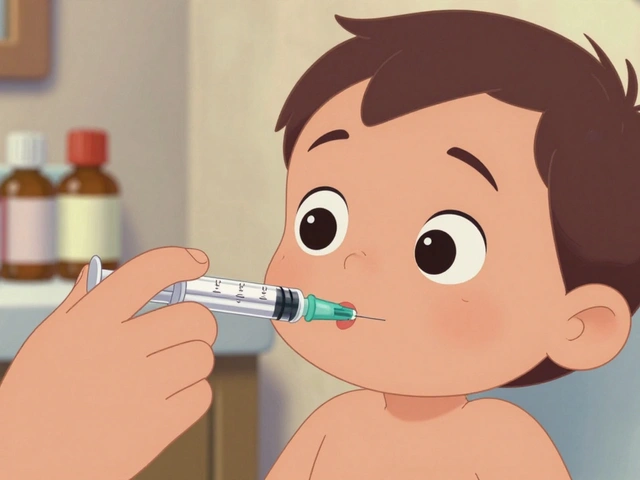
Man, I had no idea authorized generics even existed. Bought my blood pressure med for $45 a month until I asked my pharmacist last week - turned out the regular generic was $18. Same pills, same factory. I felt like an idiot for never asking before.
Stop wasting money. If you’re not asking for generics, you’re being scammed. Period. 🙄
Actually, there’s a lot more nuance here. I work in pharma compliance, and authorized generics are often used as a strategic move by big pharma to block competitors - not to save patients money. The FDA’s Orange Book doesn’t even distinguish them clearly, so most pharmacists don’t know what to tell you. And don’t get me started on how PBMs manipulate tiers to maximize rebates instead of lowering your copay. You’re not just fighting your insurance - you’re fighting a whole system designed to confuse you.
Bro, I switched from an authorized generic of my antidepressant to the regular one and saved $30/month. Same exact chemical. Same pill. Just different label. 🤯 I’m not even mad - I’m just glad I didn’t pay $50 a month for nothing. Go ask your pharmacist right now. I’ll wait. 😎
Why are Americans paying so much for medicine? In India, we get generics for pennies. Brand-name drugs? Never heard of them. You people need to stop being soft. If you can’t ask for a cheaper pill, you deserve to pay $300 for insulin. 💪
THIS IS WHY AMERICA IS BROKE. Big Pharma + PBMs + Lazy Patients = $400 BILLION DOWN THE DRAIN. And you know what? They’re laughing at us. I’ve seen the spreadsheets. The rebates? They’re hidden. The copays? Designed to hurt. If you’re not screaming at your pharmacist, you’re part of the problem. 🇺🇸🔥
i just asked my doc for a generic and they said ‘yeah sure’ but i never thought to ask if it was authorized. i just assumed all generics are the same. oops. gonna check my next rx with goodrx. thanks for the nudge. 🙏
Let me break this down for you like you’re five: If you’re still paying full price for a brand-name drug when a generic exists, you’re not just dumb - you’re complicit in corporate theft. Authorized generics? They’re the brand’s way of saying, ‘We’ll let you have the medicine, but we’re still gonna f*ck you over with insurance tiers.’ And don’t even get me started on how your pharmacist gets paid to push the most expensive version. This isn’t healthcare. It’s a rigged casino. And you’re the sucker holding the losing hand.
They don’t want you to know this because it’s all a scam. The FDA? Controlled. The pharmacists? Paid off. Even the apps like GoodRx? They take kickbacks. I’ve seen the documents. Authorized generics are just a trap to make you think you’re saving money while they reroute your cash into private equity pockets. And now they’re pushing biosimilars next - same game, bigger price tag. Wake up. This isn’t medicine. It’s a surveillance state for your prescriptions.